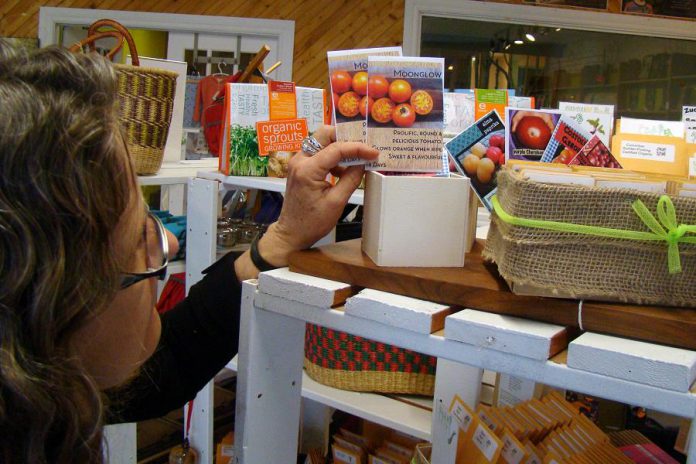
We have all now had a taste of spring and have enjoyed several days filled with mild temperatures and beautiful sunshine. The long-term forecast now shows consistent temperatures above zero and spring showers are beginning to bring small sprouts up in the garden.
If you’re feeling eager to get your hands in the soil, you may want to hold off on gardening outside for just a little longer until the threat of frost has passed. The average date of last frost in the Peterborough region is not until May 18th.
While it’s too early to start most vegetable plants outdoors, it is the perfect time to start some of your seeds inside. A general rule of thumb is to start seeds indoors two to six weeks before the last frost date.
Seeds that need a longer time to mature indoors (closer to the six-week period) include hot peppers, brassicas, and onions. Close behind are tomatoes, basil, eggplant, and okra. These need a slightly shorter window of time, around four weeks. Cucumbers, squash, and most melons should be planted indoors two weeks before the last frost date.
If you purchased and traded seeds at Seedy Sunday this past weekend, you’re likely all stocked up and eager to get started. If you’re still looking for your favourite varieties, there are lots of ways to acquire seeds. The best way to acquire fresh, viable seeds is to look for heirloom varieties that are locally and organically grown. The GreenUP Store carries a variety of vegetable seeds, as well as bird and pollinator mixes and kits for growing vegetable mixes, herbs, micro greens, and edible flowers.
Choosing the right soil is very important for starting successful seedlings indoors. To start your seeds, your best bet is to use “soilless medium” which is also commonly called “pro-mix.” This medium is light and has minerals mixed in to allow your seedlings to get off to good start. Moisten the soil evenly before adding to containers.
When it comes to containers for planting, your options are limitless. Get creative and use household items like egg cartons, paper towel rolls, or milk cartons. As long as it allows for sufficient drainage, pretty much anything goes. There’s also a wide variety of commercially available containers you can plant directly into the ground when it’s time to transfer them outdoors.
Fill your containers with moist soilless medium and place one or two seeds in each one. Create a small divot in the soil to contain your seeds. Cover lightly and label the containers so they won’t get mixed up. Place your containers in a warm, sunny window — south facing is best.
Once your seedlings have emerged from the soil, ensure that your containers have good airflow around them.
Placing a fan near your seed trays will prevent dampening-off disease or mould from forming. Another advantage is that doing this is it allows your plants to become stronger and more resistant to wind for when they’re transplanted outside.
Some seedlings, like tomatoes, may outgrow their pots and will need to be moved to a more spacious, temporary home. As before, you can be creative with your pots as long as there is enough drainage. Combine peat moss, vermiculite, compost, and potting soil to provide ample nutrients for your growing seedlings.
Before your plants go in the ground, it’s important to harden them off. Hardening off allows them to adjust to the harsh outdoor elements and ensures a better rate of survival. On warm spring days, over the course of a week or two, place plants outside in filtered sunlight, gradually increasing the amount of time they spend outside, and in cooler temperatures.
After the threat of frost has passed, your next and final step is transplanting outdoors. Choose a location that’s well suited to each type of plant you’re growing. Planting instructions, including light and spacing requirements, are typically found on the back of most seed packets.
Stop into the GreenUP Store at 378 Aylmer Street North in downtown Peterborough to pick up untreated, non-GMO seeds and get started on your indoor planting today! We have many seeds in stock including several herbs, many varieties of beans, and lots of vegetables including beets, cucumber, zucchini, squash, radish, and more.


























